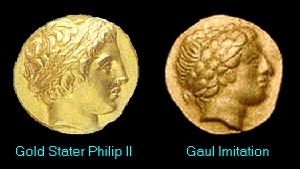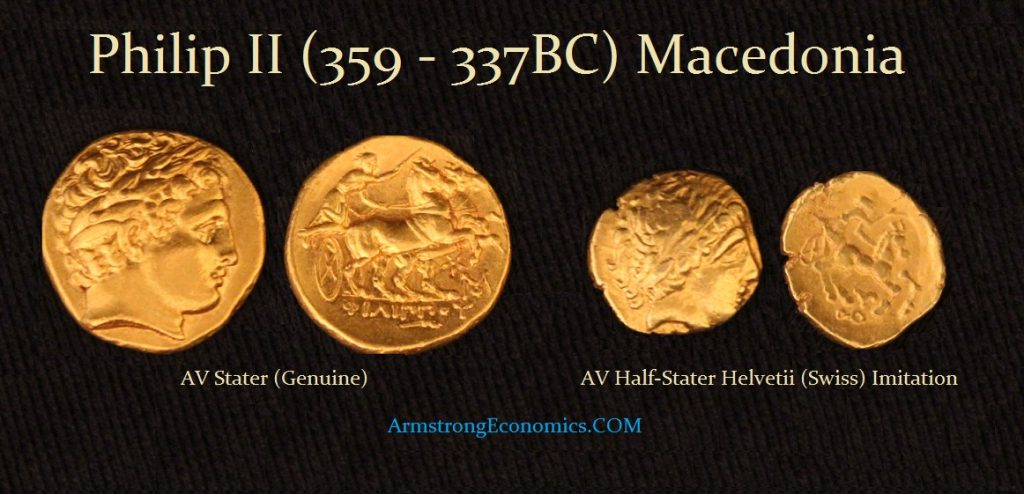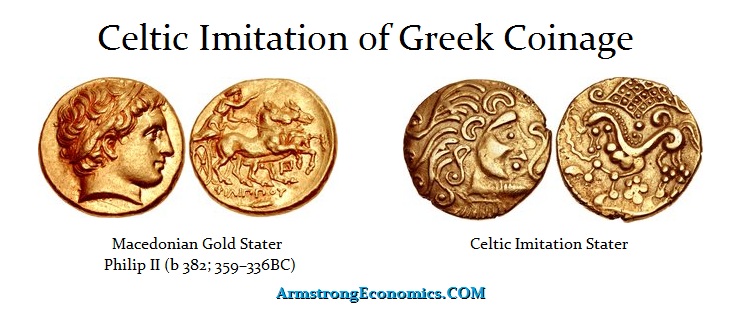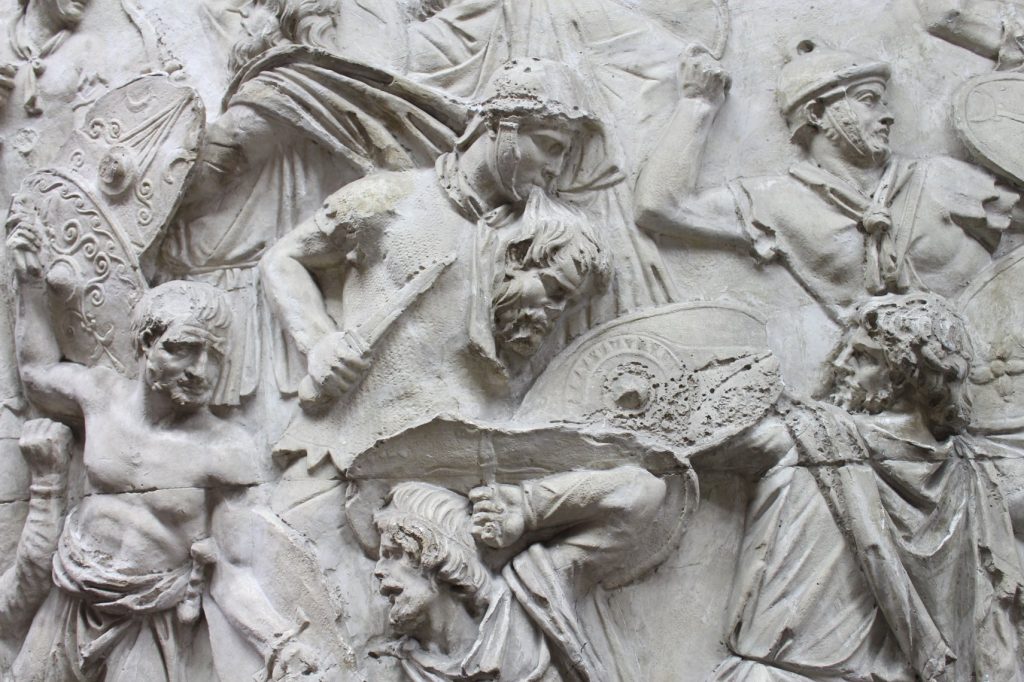Weather Impacted Wars & Migrations in Pre-Recorded History
Archaeologists working in the wetlands of Denmark have uncovered 2,000-year-old human remains are revealing that the Germanic “barbarians” were engaging in warfare in northern Europe against other barbarian tribes which had nothing to do with Rome. The research, which was published in the journal Proceedings of the National Academy of Sciences, provides a unique look at how Germanic tribes memorialized their battles. The sheer magnitude of the number of remains demonstrates that the Germanic armies were clearly organized with leadership. There is no recorded history of this people so all we have to go on are the things left behind.
One thing to emerge is that the climate in Northern Europe was turning very cold. Even by 170AD, when the Roman Emperor Marcus Aurelius was battling the Germanic attempts to invade the south most likely due to climate change. He wrote his Mediataions to keep his mind distracted from the cold at night. He sent his children home to Rome to live with their great-great-aunt Matidia because Marcus thought the evening air of the country was far too cold for them. He even asked his friend for “some particularly eloquent reading matter, something of “your own, or Cato, or Cicero, or Sallust or Gracchus—or some poet, for I need distraction, especially in this kind of way, by reading something that will uplift and diffuse my pressing anxieties.” id/ Ad Antoninum Imperator 4.1 (= Haines 1.300ff), qtd. and tr. Birley, Marcus Aurelius, 120.
It appears from this new evidence that as the weather grew colder and colder, barbarians first fought against each other for resources. It appears that after such inter-tribal warfare proved fruitless, this is when the Germanic invasions of Rome begin. The Germanic invasions of Rome began during 113 BC and lasted until they finally conquered Rome by 596 AD.
 Germanic tribes did not produce coins of their own origin. The began manufacturing the first imitations presumably around during the last century BC/first century AD. These were imitations of denarii and quinarii (half-denarius) of which a great number appear to have been struck over a wide-ranging territory. Obviously, the barbarian tribes had contact with Rome and imitated their coins, not as counterfeits, but to facilitate trade among themselves. Coins provide evidence of trade as well as political contacts extending into regions with no appreciable recorded history. Here is a Celtic imitation of a gold Stater of Philip II (359-336BC) of Macedonia.
Germanic tribes did not produce coins of their own origin. The began manufacturing the first imitations presumably around during the last century BC/first century AD. These were imitations of denarii and quinarii (half-denarius) of which a great number appear to have been struck over a wide-ranging territory. Obviously, the barbarian tribes had contact with Rome and imitated their coins, not as counterfeits, but to facilitate trade among themselves. Coins provide evidence of trade as well as political contacts extending into regions with no appreciable recorded history. Here is a Celtic imitation of a gold Stater of Philip II (359-336BC) of Macedonia.
 Here we have a barbarian imitation of a barbarian imitation of a gold stater which appears to be a half-stater. This is an imitation was made by the Swiss tribe of the Helvetii. Obviously, we have imitations of Greek coinage before Rome was important that included gold.
Here we have a barbarian imitation of a barbarian imitation of a gold stater which appears to be a half-stater. This is an imitation was made by the Swiss tribe of the Helvetii. Obviously, we have imitations of Greek coinage before Rome was important that included gold.
During the Roman Period, imitative denarii are observed across a large area of the Barbaricum world, in both the Western and the Eastern Germanic territory. We find especially denarii hoards range from Westphalia, Gotland, through Poland (the Przeworsk culture & Wielbark culture) to the Great Hungarian Plain, Moldova, Ukraine and southwestern Russia (Cherniakhiv/Sântana de Mureš cultures).
 The great number of imitative coins with identical dies do surface a considerable distance apart suggesting that there was clearly an economic trade and that the imitations were being struck generally from specific centers. One center producing imitations appears to be of the Gothic region which was located in Ukraine (Cherniakhiv culture). There is an extensive concentration of imitative denarii recorded in this region and further east. The workmanship is reasonable, but still easily distinguished from genuine coins.
The great number of imitative coins with identical dies do surface a considerable distance apart suggesting that there was clearly an economic trade and that the imitations were being struck generally from specific centers. One center producing imitations appears to be of the Gothic region which was located in Ukraine (Cherniakhiv culture). There is an extensive concentration of imitative denarii recorded in this region and further east. The workmanship is reasonable, but still easily distinguished from genuine coins.
 The early Celtic tribes generally copied Greek coins, but the iconography of imitative Greek staters appear more like abstract art than faithful designs attempting to actually imitate the Greek staters. In Ukraine, some imitative denarii were made of soft alloy, cast in bronze molds.
The early Celtic tribes generally copied Greek coins, but the iconography of imitative Greek staters appear more like abstract art than faithful designs attempting to actually imitate the Greek staters. In Ukraine, some imitative denarii were made of soft alloy, cast in bronze molds.
Some imitative denarii produced in Ukraine were pierced as was the case often in India where the coins would be strung together which was clearly a Chinese tradition. The Ukrainian imitations are often lighter and slightly smaller as well.
What is clear is that as the weather turned colder, the decline and fall of the Roman Empire began from about 180AD. This also appears to result in more frequent Germanic invasions from the North no doubt as weather reduced the food supply. A similar result appears between the Greek Heroic period and its Hellenistic period where Greece went into a Dark Age. This corresponds to the invasions of Northern Africa by the famous “Sea People” who were probably Greeks. The Philistine culture has revealed Maeceanisn pottery suggesting that they may have been in contact with the Sea People or may have merged with them. Recorded history is vague and there are indications of revolts even against Egypt by the Canaanites all during this period where it seems migrations south are driven by weather and climate change.


